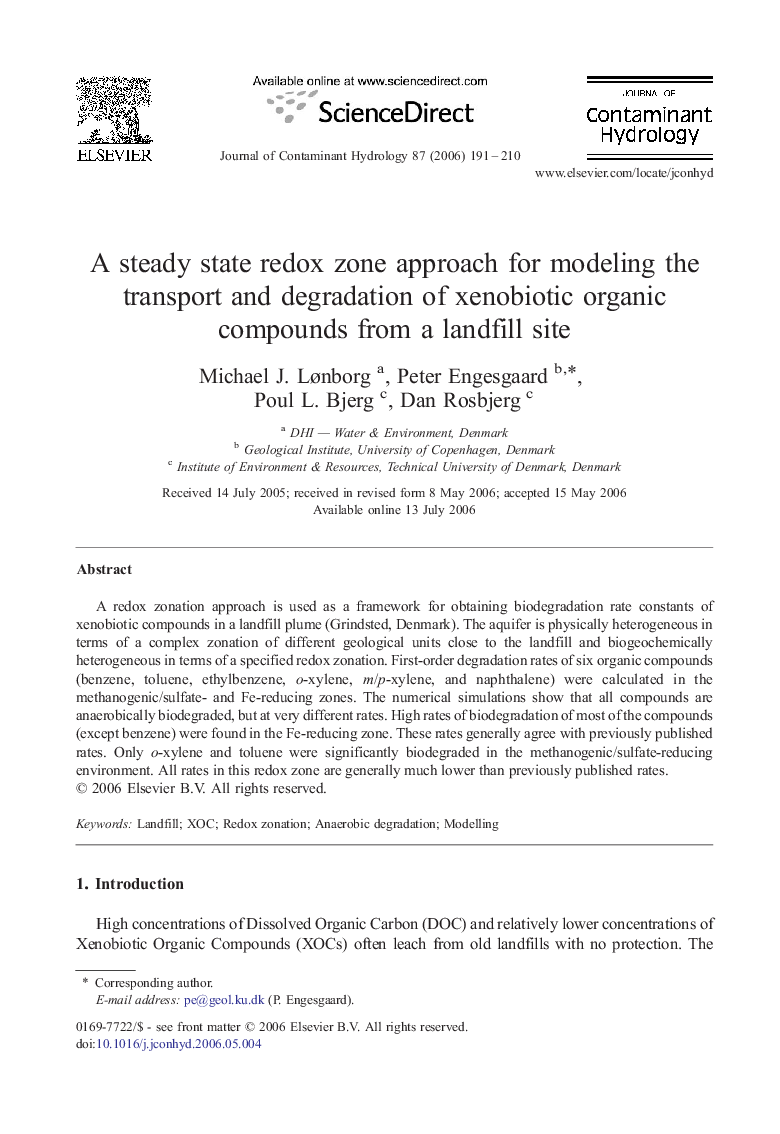| Article ID | Journal | Published Year | Pages | File Type |
|---|---|---|---|---|
| 4547666 | Journal of Contaminant Hydrology | 2006 | 20 Pages |
A redox zonation approach is used as a framework for obtaining biodegradation rate constants of xenobiotic compounds in a landfill plume (Grindsted, Denmark). The aquifer is physically heterogeneous in terms of a complex zonation of different geological units close to the landfill and biogeochemically heterogeneous in terms of a specified redox zonation. First-order degradation rates of six organic compounds (benzene, toluene, ethylbenzene, o-xylene, m/p-xylene, and naphthalene) were calculated in the methanogenic/sulfate- and Fe-reducing zones. The numerical simulations show that all compounds are anaerobically biodegraded, but at very different rates. High rates of biodegradation of most of the compounds (except benzene) were found in the Fe-reducing zone. These rates generally agree with previously published rates. Only o-xylene and toluene were significantly biodegraded in the methanogenic/sulfate-reducing environment. All rates in this redox zone are generally much lower than previously published rates.
